YOU ARE HERE >> AmazingRibs » Ratings & Reviews » Ratings Reviews And Buying Guides » Best Thermometers For Food And Cooking » Combustion Predictive Thermometer Reviewed And Rated
Combustion Predictive Thermometer Reviewed And Rated
All of our reviews are done independently by our team of testers and are in no way influenced by advertising or other monetary compensation from manufacturers. Click here to learn more about our unbiased product review process.
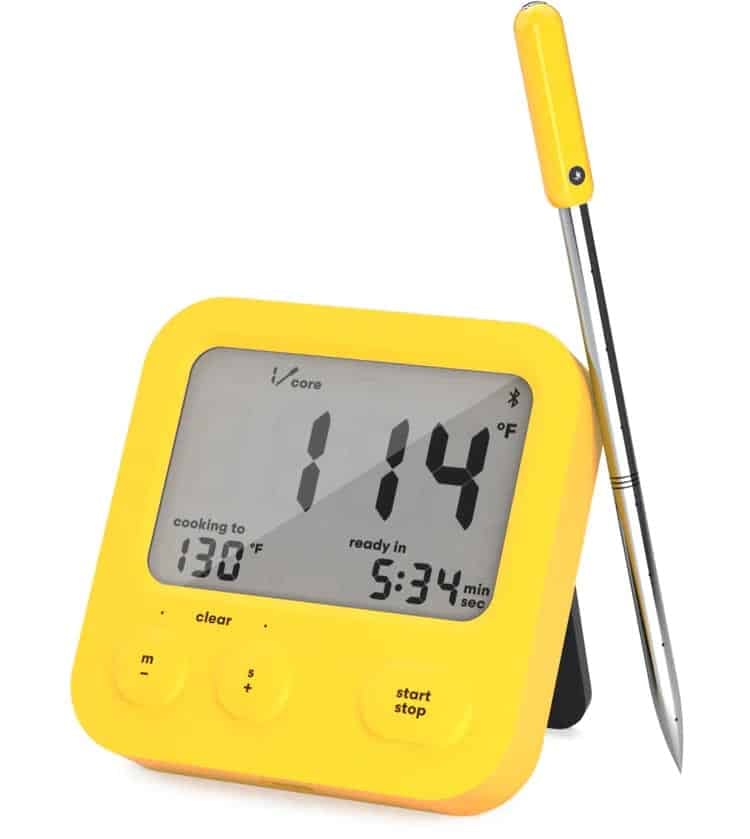
Combustion’s Predictive Thermometer was a new entry into the wireless temperature probe product category in 2023. It is a big leap in the category with a number of innovations among them the ability to predict approximately how long until the food will be done!
These products typically use Bluetooth to convey temperature data from the probe’s sensors to a receiver or smartphone app. There are no wires connecting the probe, so the user doesn’t need to fret about routing and storing cables. However, the internal electronics must be protected from high cooker temps, and this necessitates using the food as an insulator.
In other wireless probes, two sensors measure the temperatures at the probe tip and the handle. The probe tip measures the food temperature and the handle measures the ambient temperature in the cool air bubble surrounding the food. Placement of the probe is critical to obtaining the core food temperature, and it can be difficult to locate the precise spot.
To address this problem, Combustion’s probe has eight sensors arrayed along its length. The internal circuitry looks at the temps and identifies the lowest value as the core temp of the food. The sensor in the handle captures the ambient temperature of the air close to the exterior of the meat. It is important to know that this can be misleading because there is usually a cool air bubble around meat as it warms. By using multiple sensors you don’t have to place the probe’s tip in exactly the right spot, as is necessary in all other probes. All three temperatures – the core temp, the surface temp, and the ambient temp are readable either on the meter or in the app.
Bluetooth is often criticized for its short range. This is especially true if the probe is in food being cooked in a closed space. The metal exterior of a cooker acts as a shield, preventing the signal from getting from the probe to the receiver. Combustion solves this problem by using a receiver/transmitter (a “repeater” in radio terminology) that can receive the weak signal from the probe and re-transmit it with more power. This boost allows a much greater distance between the cooker and the phone app. The use of the repeater is optional and you can use more than one. If you’re close enough to the probe it can communicate directly with the meter or the phone app.
Temperature accuracy is of paramount importance if one is to avoid under- or over-cooking. Undercooked food is potentially unsafe to eat, and nobody wants to overcook an expensive roast. Since we’re talking about food temps, we really only care for temps in the range of 100° to 212°F (38° to 100°C). The table below shows how well the Combustion probe measures the food temp:
Actual: Measured
100°F: 100.0
110°F: 110.0
120°F: 120.1
130°F: 130.1
140°F: 140.0
150°F: 150.0
160°F: 160.2
170°F: 170.1
180°F: 180.3
190°F: 190.3
200°F: 200.3
210°F: 210.2
Throughout the food temperature range, the probe was within 0.3°F, an excellent result. It should be noted that when first turned on, the probe acts as an instant-read thermometer sending measurements 5 times per second. When inserted into food and left there it sends measurements every 5 seconds.
The ambient temperature measurement is less critical than the food temp. In the predictive tests below, I used an oven temperature of 325°F (163°C) as measured by a Fireboard probe of known accuracy. The maximum safe temp for the ambient probe is 575°F (300°C). While most ovens/cookers won’t get anywhere near this temperature, a steak on a grill could cause flare-ups that could damage the probe. In all fairness, such temperature flare-ups would likely damage most cabled temp probes as well.
One minute after the repeater loses the signal from the probe, the temperature display will show all dashes. If the app is reading the probe directly, without the repeater, the display will gray out and beep.
One frequent complaint about wireless temp probes is their diameter. Most devices I’ve tested are 0.25” (6mm). The Combustion probe is 0.19” (4.8mm), 2% smaller. The useful length (minus the handle) of the probe is 3.8” (10cm), and the minimum insertion distance is about 2-inches (5cm). The repeater and the app can monitor four probes simultaneously by cycling through them.
Predictive Cooking
We all want to know when our food will be ready, and we’d like to know as soon as possible. One of the best features of the Combustion wireless thermometer is its ability to predict how much longer the cook will take. Ideally, we’d like to know as soon as the food is placed in the cooker, but that isn’t realistic. To make a prediction, the probe must collect several data points that permit fitting the temperature changes to a known curve, and then calculating how much time will be required to reach the desired temperature. Sounds easy enough, right? Nope! Food temperatures won’t follow a simple exponential curve. Other factors creep in to complicate the calculation, like turning the food, evaporative cooling (aka the “stall”), changes to the ambient temperature (flare-ups), carry-over cooking, and other intangible factors.
The Test Procedure
I simulate roasting a piece of meat by using a rolled-up sock that has been nearly saturated with water. I shaped it to resemble a typical steak of 1.5” (38mm) thickness. The dimensions are adequate to insert the probe beyond the minimum depth. I insert the probe into the middle of the sock, in parallel with a conventional cabled probe for reference. I positioned a conventional probe, held in place with a grill clip, adjacent to the wireless probe’s handle as an ambient temp reference. I place the sock and probes into a Breville oven and adjust the temp to 325°F (163°C) as reported by the reference ambient probe. I then monitored the temps and times as reported by the probe under test.
Consider the following scenarios: Cook to 130°F (54°C): This is pretty straightforward because there won’t be any stall or big changes in the internal moisture content during the cook due to evaporative cooling. The stall only happens when the oven is at a low temperature and the meat has to be cooked past well-done, usually above 160°F when the cooling and heating progress at the same rate. I started the “cook” by placing the apparatus into a pre-heated (325°F or 163°C) oven at 1:51 p.m. and starting a stopwatch. The phone app displayed a percentage of how much of the cook was complete for about nine minutes when the percent was replaced by a time to finish. The first prediction was displayed at 2 p.m. for 13 minutes, with the cook prediction at 2:13 p.m. Eleven minutes later, at 2:11 p.m. the time to completion showed six minutes, an increase of four minutes from the first prediction. At 2:20 the set temp of 130°F (54°) was reached. The actual time to do the cook was 29 minutes, or seven minutes longer than the first prediction. The closer the temp was to the target, the closer the estimate was to the actual time required.
When I cooked the sock to a higher temperature it hit the stall and the prediction was much less accurate. I think that the prospect of an accurate prediction early in a cook is still an elusive goal and at lower oven temperatures when there is a stall it is also elusive. Meathead later tested it at higher temperatures in a grill and oven and found the predictions to be pretty good, and as the cook progressed, they got even better.
The build quality of this thermometer is high. It is easy to use. I’ve been told to expect additional features in future firmware updates. Plots of temp vs. time would be useful, as would audible annunciations of communication loss. The countdown timer in the repeater doesn’t sound in the app.
Both the probe and the repeater have internal rechargeable batteries that are topped off using a standard USB cable that they supply. There is no USB wall wart necessary. The various batteries hold a charge fairly long, days, but if you don’t use them for a while they may need to be paired again when you start cooking. If you have an outlet, it would be wise to leave it plugged in.
I prefer to see a printable user’s manual rather than going to the company’s website to ferret out the features. Call me old-fashioned, but I like to have a piece of paper with instructions that I can highlight. A QR code doesn’t cut it. (Maybe I’m asking too much of a product that is in the early development stages?)
Click the buttons below to search our complete database of reviews:
Product Information:
-
Thermometer Function:Hand Held/Instant Read, Leave in Food, Leave in Cooker, Wireless Remote
-
Item Price :199.00
*Price Subject To Change -
Probe:Diameter: 0.19" (4.8mm); length: 3.75" (9.7cm)
-
Battery Type:Internal rechargeable
-
Safe Operating Range:Not Specified
-
Min & Max Temp:0 to 212°F in food, 0 to 575°F (300°C) ambient
-
Display Precision:0.1°
-
Actual Temp at 32 Degrees:32.0
-
Actual Temp at 130 Degrees:See Narrative
-
Speed from 32 to 212 Degrees:n/a
-
Numbers Display Size:0.79" (20mm)
-
Water Resistance Rating:IP67 (probe)
-
Weight:5 oz. (141g) (Both units)
-
C/F Switch:Built in CF switch
-
Backlight:Built in Backlight
-
Auto shutoff:No Auto Shutoff
-
Color Options:Yellow
-
Thermometer Connection:Bluetooth
-
App:Apple and Android
-
Logging:In App
-
Included:Probe, display, USB cable
-
Available Accessories:Probes Available
-
Alarms:Audible/Visible
Manufacturer:
-
Combustion, Inc.
Related articles
6/22/2024Published On: 5/30/2023
-
Bill McGrath, AmazingRibs.com Chief Thermometer Reviewer - Bill McGrath is AmazingRibs.com's Thermometer Maven. He has sophisticated equipment, an electrical engineering degree from Cornell University, and an MBA (almost) from UC Berkeley. Despite being mostly retired, he is still the person responsible for developing and updating all of ExxonMobil's training modules.
Spotlight
These are not paid ads, they are a curated selection of products we love.
All of the products below have been tested and are highly recommended. Click here to read more about our review process.
Use Our Links To Help Keep Us Alive
Many merchants pay us a small referral fee when you click our “buy now” links. This has zero impact on the price you pay but helps support the site.
Why there is salt in our rub…
When you make rubs at home we recommend you add salt first then the herbs and spices because salt penetrates deep and the other stuff remains on the surface. So thick cuts need more salt. We put salt in these bottled rubs because all commercial rubs have salt and consumers expect it. You can still use these as a dry brine, just sprinkle the rub on well in advance to give the salt time to penetrate. For very thick cuts of meat, we recommend adding a bit more salt. Salt appears first in the ingredients list because the law says the order is by weight, not volume, and salt is a heavy rock.
Sprinkle on one tablespoon per pound of meat two hours or more before cooking if you can. Called “dry brining,” the salt gets wet, ionizes, becomes a brine, and slowly penetrates deep, enhancing flavor and juiciness while building a nice crusty “bark” on the surface. Sprinkle some on at the table too!
Are they hot? No! You can always add hot pepper flakes or Chipotle powder (my fave) in advance or at the table. But we left them mild so you can serve them to kids and Aunt Matilda
Ode to The Pitmaster Club
From TBoneJack, the unofficial Poet Laureate of The Pitmaster Club:
AmazingRibs is where you go,
To get the best advice,
You’ll find out how, to smoke a cow,
And it will turn out nice.
Smokers, gadgets, recipes,
Charcoal, gas, or wood?
The how, the why, and what to try,
When things arn’t going good.
Selection, prep, and cook techniques,
Marinades and such,
Rubs and brines and temps and times,
And how to use the Crutch.
Brisket secrets are revealed,
For moist and tender meat,
The point, the flat, the rendered fat,
The proper mix of heat.
I found out how to smoke spare ribs,
Great bark and taste and worth,
I want some more, I’ll have them for,
My last meal on this Earth.
Memphis Dust did suit them well,
I served them without sauce,
Not 3-2-1, not overdone,
No precious flavor loss.
Jambo, Lang, or Meadow Creek,
It’s hard to make the call,
Almost a crime, so little time,
I’d like to try them all.
I’m not ashamed, I’m not alone,
‘Cause many have this lot,
But I’ll admit, here in the Pit,
My wife said Not! Not! Not!
Weber, Brinkman, PBC,
No need for budget breach,
They cook great food, just ask me dude,
‘Cause I have one of each.
Obsessed I am, I know it’s true,
They call it MCS,
I saw the doc, he was in shock,
He too is in this mess.
Myron Mixon, Johnny Trigg,
Cool Smoke’s Tuffy Stone,
Harry Soo, Chris Lilly too,
And Moe who cooks alone.
They’re all good, I like them fine,
I’m sure they cook good Q,
They’ve earned the right, I see the light,
I’ll give them their fair due,
But I have learned, thru many cooks,
This web site is da bomb,
For what to do, browse over to,
AmazingRibs dot com.
Tired of seeing popup ads?
No need to throw a fit,
Don’t you know, just spend some dough,
And join us in the Pit.
And if you travel, don’t despair,
No further should you look,
The answer’s clear, put down your beer,
And order Meathead’s book.

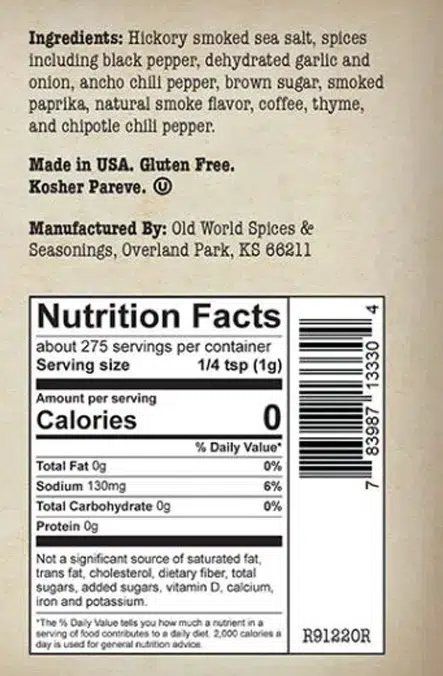
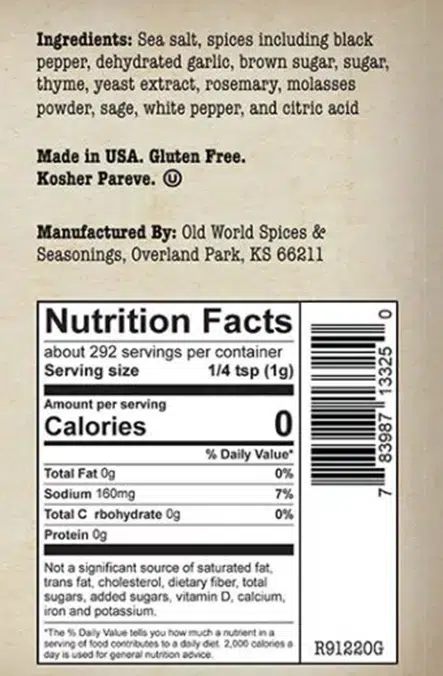
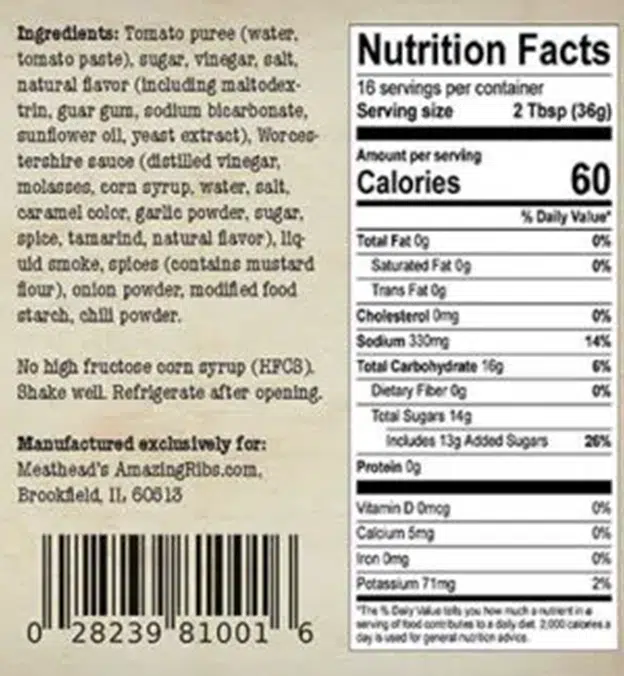
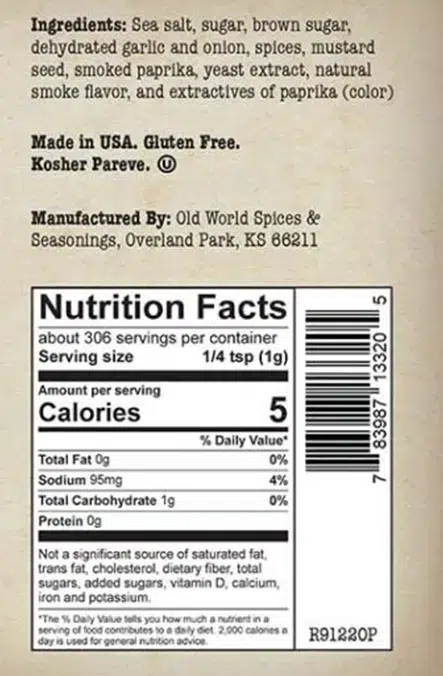
High quality websites are expensive to run. If you help us, we’ll pay you back bigtime with an ad-free experience and a lot of freebies!
Millions come to AmazingRibs.com every month for high quality tested recipes, tips on technique, science, mythbusting, product reviews, and inspiration. But it is expensive to run a website with more than 2,000 pages and we don’t have a big corporate partner to subsidize us.
Our most important source of sustenance is people who join our Pitmaster Club. But please don’t think of it as a donation. Members get MANY great benefits. We block all third-party ads, we give members free ebooks, magazines, interviews, webinars, more recipes, a monthly sweepstakes with prizes worth up to $2,000, discounts on products, and best of all a community of like-minded cooks free of flame wars. Click below to see all the benefits, take a free 30 day trial, and help keep this site alive.
Post comments and questions below
1) Please try the search box at the top of every page before you ask for help.
2) Try to post your question to the appropriate page.
3) Tell us everything we need to know to help such as the type of cooker and thermometer. Dial thermometers are often off by as much as 50°F so if you are not using a good digital thermometer we probably can’t help you with time and temp questions. Please read this article about thermometers.
4) If you are a member of the Pitmaster Club, your comments login is probably different.
5) Posts with links in them may not appear immediately.
Moderators